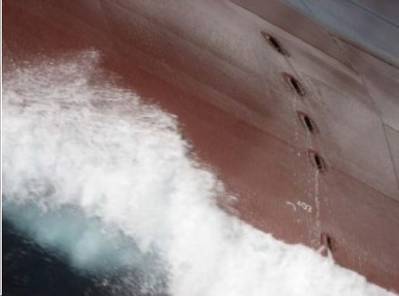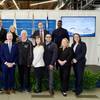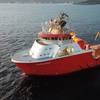Air Lubrication System Gets AIP from Bureau Veritas
Bureau Veritas (BV) said it has been working with GILLS PTE LTD in Singapore to assess the performance of its air lubrication system designed to improve ship efficiency and decrease fuel burn by reducing the drag of an underwater hull.
GILLS, which stands for gas injected liquid lubrication systems, deploys NACA profiles to create self-generating micro-bubbles for ‘turbulent modulation’ which has a ‘hull-tightening’ effect, reducing drag and energy requirements. The self-generating nature of micro-bubble clouds with no requirement for air-compression and additional energy requirements is one of the features of the GILLS system.
Following an in-depth assessment by Bureau Veritas in Singapore, covering safety of installation and updated Class compliance, GILLS has now been awarded approval in principle (AiP) for the system to be installed onboard vessels in general. The AiP covers the design of the system and installation onboard vessels as reviewed against the Bureau Veritas Rules for Steel Ships NR 467 (as updated in January 2021).
David Barrow, SE Asia Zone Vice-President for Bureau Veritas, said, “The collaboration with GILLS is timely as the industry seeks performance improvements in line with the EEXI energy efficiency targets. Pressure is building to find cost-effective solutions that work and can be financed.
“The GILLS systems has been installed on an existing vessel for a number of years now and the vessel owners are confident of the fuel savings are approximately 10%. The next step is a full-scale measurement and a validation exercise led by Bureau Veritas Solutions (BVS) to identify confirmed performance. BVS, our consultancy arm, is also working with GILLS to assess the potential of access to Singapore ‘Green Funds’ to provide financial support to owners considering using such energy-saving systems.”
The hull tightening effect of the GILLS technology is a phenomenon of the various factors and forces acting on the microbubbles generated by a GILLS vortex generator installed at the bow of the ship. These factors and forces can be identified as the following:
- A ship’s forward movement
- Creation of microbubbles by negative pressure and Kelvin Helmholtz Instability (KHI) exiting the vortex generator
- The random shape of microbubbles with turbulence, eddies and vortices, from KHI
- Buoyancy acting on the micro bubbles inducing an upward force
- Shape of the hull.
Peter Kneipp, Managing Director of GILLS PTE LTD, said, “The GILLS Air Lubrication System is a nature based innovative technology that not only uses the micro bubbles to reduce the drag, emissions, fuel and biofouling, but it also utilizes the ship speed to generate a negative pressure and minimizes the required external compressor power.
“We are greatly confident that GILLS will be a valuable contributor for practically every ship type to improve the EEDI /EEXI IMO Index. GILLS can also be retrofitted to existing ships as well as new vessels.”













